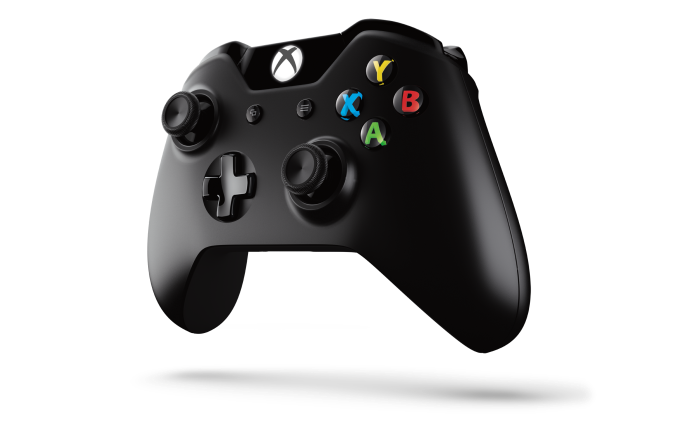The Xbox One: Hardware Analysis & Comparison to PlayStation 4
by Anand Lal Shimpi on May 22, 2013 8:00 AM ESTPower & Thermals
Microsoft made a point to focus on the Xbox One’s new power states during its introduction. Remember that when the Xbox 360 was introduced, power gating wasn’t present in any shipping CPU or GPU architectures. The Xbox One (and likely the PlayStation 4) can power gate unused CPU cores. AMD’s GCN architecture supports power gating, so I’d assume that parts of the GPU can be power gated as well. Dynamic frequency/voltage scaling is also supported. The result is that we should see a good dynamic range of power consumption on the Xbox One, compared to the Xbox 360’s more on/off nature.
AMD’s Jaguar is quite power efficient, capable of low single digit idle power so I would expect far lower idle power consumption than even the current slim Xbox 360 (50W would be easy, 20W should be doable for truly idle). Under heavy gaming load I’d expect to see higher power consumption than the current Xbox 360, but still less than the original 2005 Xbox 360.
Compared to the PlayStation 4, Microsoft should have the cooler running console under load. Fewer GPU ALUs and lower power memory don’t help with performance but do at least offer one side benefit.
OS
The Xbox One is powered by two independent OSes running on a custom version of Microsoft’s Hyper-V hypervisor. Microsoft made the hypervisor very lightweight, and created hard partitions of system resources for the two OSes that run on top of it: the Xbox OS and the Windows kernel.
The Xbox OS is used to play games, while the Windows kernel effectively handles all apps (as well as things like some of the processing for Kinect inputs). Since both OSes are just VMs on the same hypervisor, they are both running simultaneously all of the time, enabling seamless switching between the two. With much faster hardware and more cores (8 vs 3 in the Xbox 360), Microsoft can likely dedicate Xbox 360-like CPU performance to the Windows kernel while running games without any negative performance impact. Transitioning in/out of a game should be very quick thanks to this architecture. It makes a ton of sense.
Similarly, you can now multitask with apps. Microsoft enabled Windows 8-like multitasking where you can snap an app to one side of the screen while watching a video or playing a game on the other.
The hard partitioning of resources would be nice to know more about. The easiest thing would be to dedicate a Jaguar compute module to each OS, but that might end up being overkill for the Windows kernel and insufficient for some gaming workloads. I suspect ~1GB of system memory ends up being carved off for Windows.
Kinect & New Controller
All Xbox One consoles will ship with a bundled Kinect sensor. Game console accessories generally don’t do all that well if they’re optional. Kinect seemed to be the exception to the rule, but Microsoft is very focused on Kinect being a part of the Xbox going forward so integration here makes sense.
The One’s introduction was done entirely via Kinect enabled voice and gesture controls. You can even wake the Xbox One from a sleep state using voice (say “Xbox on”), leveraging Kinect and good power gating at the silicon level. You can use large two-hand pinch and stretch gestures to quickly move in and out of the One’s home screen.
The Kinect sensor itself is one of 5 semi-custom silicon elements in the Xbox One - the other four are: SoC, PCH, Kinect IO chip and Blu-ray DSP (read: the end of optical drive based exploits). In the One’s Kinect implementation Microsoft goes from a 640 x 480 sensor to 1920 x 1080 (I’m assuming 1080p for the depth stream as well). The camera’s field of view was increased by 60%, allowing support for up to 6 recognized skeletons (compared to 2 in the original Kinect). Taller users can now get closer to the camera thanks to the larger FOV, similarly the sensor can be used in smaller rooms.
The Xbox One will also ship with a new redesigned wireless controller with vibrating triggers:
Thanks to Kinect's higher resolution and more sensitive camera, the console should be able to identify who is gaming and automatically pair the user to the controller.
TV
The Xbox One features a HDMI input for cable TV passthrough (from a cable box or some other tuner with HDMI out). Content passed through can be viewed with overlays from the Xbox or just as you would if the Xbox wasn’t present. Microsoft built its own electronic program guide that allows you to tune channels by name, not just channel number (e.g. say “Watch HBO”). The implementation looks pretty slick, and should hopefully keep you from having to switch inputs on your TV - the Xbox One should drive everything. Microsoft appears to be doing its best to merge legacy TV with the new world of buying/renting content via Xbox Live. It’s a smart move.
One area where Microsoft is being a bit more aggressive is in its work with the NFL. Microsoft demonstrated fantasy football integration while watching NFL passed through to the Xbox One.














245 Comments
View All Comments
Rogatti - Wednesday, May 22, 2013 - link
If Sony allow Linux OS ... PS4 GO !Next generation of EyeToy...E3 2013 ?
blacks329 - Thursday, May 23, 2013 - link
They've already showed the next gen PS Eye and it was announced back in February that it would be shipping with every PS4 (just like Kinect) ... Sony needs better marketers lol.Majeed Belle - Sunday, September 8, 2013 - link
All of you who are trying to use the "Sony will ship with the PSeye" thing is missing a very big point.The PSeye IS NOT required for ANY functionality. That's a big difference there big man.
I personnaly don't give a damn about the eye or kinect I didn't use either of them last gen and I won't use either now. If you are going to try and make a though you should try to state ALL the facts. Not just the ones that you think will validate your argument.
rasatouche - Thursday, May 23, 2013 - link
Memory bandwidth is going to be a huge issue, no? I'm mean we've all seen the benchmarks when you get an AMD apu based X86 pc, and then you change the speed of the ram and you see 30 - 40% difference in FPS, on PC with all it's glorious overhead. In games GPU's are the deciding factor, and probably still will be for sometime, not to mention the PS4 will likely have a less intensive ram overhead for the OS to boot.What this is going to mean this gen IMO, is that sony's first party titles will probably look better, and third party games, and the 'ports' if you will, will be the reverse of last generation. I remember one of the main reasons I got a 360 was that it was the better console for 3rd party titles, they ran better, less texture popping & FPS dips / tearing, than the ps3 at the time. It will likely be the reverse this generation, seeing as games should be easier to get running optimally on the ps4, simply because it has more GPU. 50% more shaders in the GPU is nothing to sneeze at, to put it in PC performance terms, it's probably about the relative difference between a 660ti & a 680.
elitewolverine - Thursday, May 23, 2013 - link
you might want to re-understand how the internals will work.ddr5 is great at bandwidth, something a video card needs, because its sharing large amounts of predetermined data, latency is not a real issue. DDR3, is used in pcs because its cheaper, but also because it has lower latency in general.
You off load one of main things a gpu does, framebuffering, and ddr5 becomes a highly priced memory module.
Don't forget, the x1 is carring a set of 2133 ddr3's, what you are talking about is people going from 1333 ddr3 to 1800 or 2133. Good thing the x1 already has 2133
mayankleoboy1 - Thursday, May 23, 2013 - link
Could it be that 2 years down the line, MS or Sony could overclock the CPU part to something like 1.8GHz through a firmware update ?tipoo - Thursday, May 23, 2013 - link
Why would they not launch at that speed then, since every single shipped PS4 would have to be validated for the higher speed first?WoodyPWX - Thursday, May 23, 2013 - link
Sony is the winner here. The architecture is the same, so developers can easily tune some numbers (higher quality shaders, more particles, higher FPS, higher resolution etc) to get noticeably better results on the PS4. I would prefer PS4 as my next gaming device. Hopefully Sony will not screw up developer tools.kensa99 - Thursday, May 23, 2013 - link
I prefer Xbox one too! I liked playing Xbox 360 games ever and even read many articles about it from Aneesoft Xbox 360 column. And now I will choose Xbox as my favorite game console.alex@1234 - Thursday, May 23, 2013 - link
GPU is the most important factor in determining the console. PS4 holds the advantage here. Xbox one unless they change the GPU similar to PS4, I will not opt for it. Other than this the integration of TV, Internet is not necessary for most of the gamers. Still Xbox should change the GPU, otherwise it will lose.